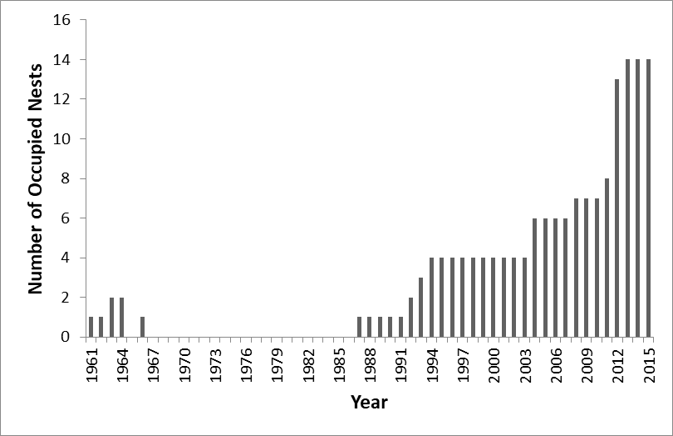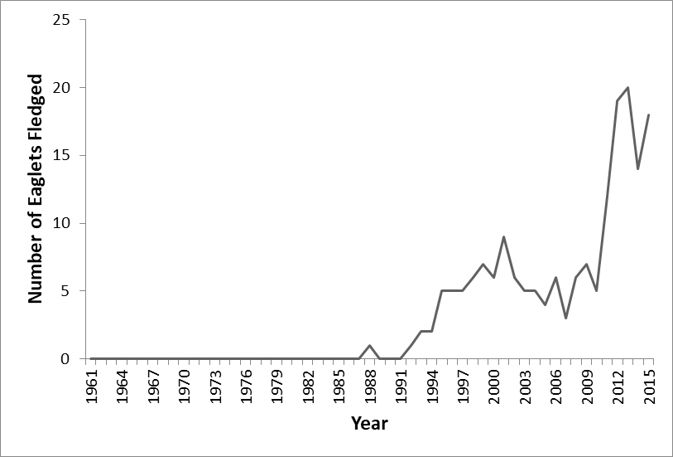Authors
John H. Hartig, Great Lakes Institute for Environmental Research, University of WindsorBackground
The River Raisin is located in the southeastern portion of Michigan's Lower Peninsula with the watershed extending into five Michigan counties and even dipping into a small portion of northern Ohio. Conversely, the boundary of the River Raisin Area of Concern (AOC), the area of the River Raisin most impacted by human-made contaminants, is located entirely within the City of Monroe. The boundary of the AOC is defined as the lower (4.2 km or 2.6 miles) portion of the River Raisin, downstream from Dam No. 6 at Winchester Bridge in the City of Monroe, extending 0.8 km (one-half mile) out into Lake Erie following the Federal Navigation Channel and along the nearshore zone of Lake Erie, both north and south, for 1 km (one mile).
Through the International Joint Commission it was identified a Great Lakes AOC with impaired beneficial uses. In 1985, the Michigan Department of Natural Resources, in cooperation with U.S. Environmental Protection Agency, committed to developing a remedial action plan (RAP) to restore these impaired beneficial uses.
Like many areas of the Great Lakes, industrial development, including paper mills and automotive manufacturing, left behind a legacy of pollution (Foose et al., 2018). The initial River Raisin RAP identified the following problems: heavy metals and polychlorinated biphenyl (PCB) contamination of the sediments and water column; sediment input from nonpoint sources outside of the AOC; and PCB contamination of fish (Michigan Department of Natural Resources, 1987). Because of PCB contamination, a fish consumption advisory had been issued by the Michigan Department of Public Health. The fish contamination and consumption advisory and the contamination of river sediments were identified as the primary impaired uses in the AOC and the 1987 RAP focused on these issues. In all, nine of the possible 14 BUIs were deemed to be impaired.
RAP Development in the Spirit of Adaptive Management
The Stage 1 RAP was developed to reach agreement on problem definition, including use impairments, and causes, and was completed in 1987. In the spirit of adaptive management, where assessments are made, priorities set, and action taken in an iterative fashion for continuous improvement, the RAP was updated periodically (Table 1). The RAP process placed a high priority on implementing concurrently both necessary studies and remedial and preventive actions. Actions to restore impaired beneficial uses have always been paramount. To ensure local ownership of the RAP, the Michigan Department of Natural Resources and the Michigan Department of Environmental Quality have organized many public meetings, helped organize a River Raisin Public Advisory Council, and worked with the River Raisin Watershed Council, the City of Monroe, and many others.
Contaminated Sediment Remediation
The River Raisin AOC was originally designated an AOC in 1985 because of PCB-contaminated sediments (Table 1). Scientific assessments were performed by Michigan Department of Environmental Quality (MDEQ) and the U.S. Environmental Protection Agency
Table 1. A chronology of RAP activities to restore impaired beneficial uses in the River Raisin AOC.


(USEPA) to quantify the severity and geographic extent of sediment contamination. Quantitative cleanup targets were established based on: measured PCB uptake in fish and sediment dwelling organisms; PCB exposure reductions required to remove beneficial use impairments of restrictions on fish and wildlife consumption, bird or animal deformities or reproduction problems, and restrictions on dredging activities; and applicable laws like the U.S. Toxic Substance Control Act, the U.S. Clean Water Act, and the Michigan Toxic Substances Control Act.
In 1997, Ford Motor Company removed 20,000 m3 of highly PCB-contaminated sediment from the AOC, under U.S. Environmental Protection Agency order at a cost of $6 million (Foose et al., 2018). From 1998-2002, the U.S. EPA and MDEQ performed post-remediation sediment monitoring, finding that high levels of PCBs remained in both the sediments and in fish tissue. PCB contamination of the sediments is responsible for four of the beneficial use impairments: degradation of benthos, restrictions on fish and wildlife consumption, bird or animal deformities or reproductive problems, and restrictions on dredging activities.
In 2012, the U.S. Army Corps of Engineers performed a strategic navigational dredging project that removed 52,750 m3 of PCB-contaminated sediment at a cost of $800,000. Additional sediment remediation took place in 2012-2013 and 2016 under the Great Lakes Legacy Act, in partnership with Ford Motor Company and the MDEQ (Figure 1). Methods employed included mechanical dredging, hydraulic dredging, and capping. In total, 95,350 m3 of PCB-contaminated sediment were removed and disposed (completed in 2016) at a cost of $36.3 million (Foose et al., 2018). MDEQ and Ford provided cash and in-kind services of over $15.4 million under the Great Lakes Legacy Act cost-sharing agreement. The contaminated sediment was transported to a disposal facility certified to handle contaminated material in Wayne County, Michigan. Partners in the project included: USEPA, MDEQ, and Ford Motor Company.

Figure 1. Contaminated sediment remediation in the lower River Raisin (credit: U.S. Environmental Protection Agency).
Monitoring studies of the benthic conditions are now underway to determine the efficacy of the 2016 contaminated sediment remediation and the related ecosystem response.
Return of Bald Eagles in Monroe County
Bald eagles throughout the Great Lakes were impacted by persistent toxic substances, including the River Raisin watershed. U.S. Fish and Wildlife Service (USFWS) and Michigan Departments of Environmental Quality and Natural Resources have been monitoring bald eagles throughout the state for over 50 years. For 20 years, beginning in the late-1960s, no occupied bald eagle nests were reported in Monroe County (Figure 2a). Bald eagle nesting in Monroe County was again documented in 1987 and steadily increased thereafter to the point where 14 occupied nests have been found in recent years (2013, 2014 and 2015). Bald eagle fledging success in Monroe County has shown a similar improvement with 15 or more bald eagles fledging in recent years (2012, 2013, and 2015; Figure 2b). Other avian studies are underway to measure contaminant impacts and response to sediment remediation.

Figure 2a. Occupied bald eagle nests per breeding site in Monroe County, Michigan (source: USFWS and Michigan Departments of Environmental Quality and Natural Resources).

Figure 2b. Number of eaglets fledged per year in Monroe County, Michigan, 1961-2015 (data collected by USFWS and Michigan Departments of Environmental Quality and Natural Resources).
Summary
All remedial actions identified for use restoration in the River Raisin RAP have now been implemented. Although these sediment remediation and habitat restoration projects have been completed, it will take time for the ecosystem to respond. Monitoring to track ecosystem response and ultimately use restoration is underway. This remediation and restoration accomplished was the result of collaborative partnerships.
Contaminated sediment remediation is often unpredictable (Foose et al., 2018). In the River Raisin AOC, a significant sediment remediation project was completed in 2012. Following that project, there was hope that all the contaminated sediments had been successfully remediated. However, upon further investigation and sampling, additional high levels of PCBs were found. In 2017, a second, large-scale sediment remediation project intended to get the last of the very high levels of PCBs in the sediments of the river was completed. Monitoring continues to determine if the PCBs were successfully remediated. The AOC program requires patience and dedication to keep working towards a goal of remediating all contaminated sediments, restoring habitat, and working with all public and private partners for a revitalized waterfront community.
Finally, it should be noted that Great Lakes Legacy Act and Great Lakes Restoration Initiative were essential is achieving the $36 million sediment remediation project completed in 2016. Great Lakes Legacy Act and Great Lakes Restoration Initiative were used to leverage cash and in-kind services from Michigan DEQ and Ford Motor Company as part of a cost-sharing agreement. This was a good example of a public-private partnership for significant sediment remediation.
References
- Foose, M., D. Stefanski, B. Laroy, D. Micka, and J. Hartig. Restoration of the River Raisin Area of Concern. International Association for Great Lakes Research, Ann Arbor, Michigan, USA.
- Michigan Department of Natural Resources. 1987. Remedial Action Plan for the River Raisin Area of Concern. Lansing, Michigan, USA.
